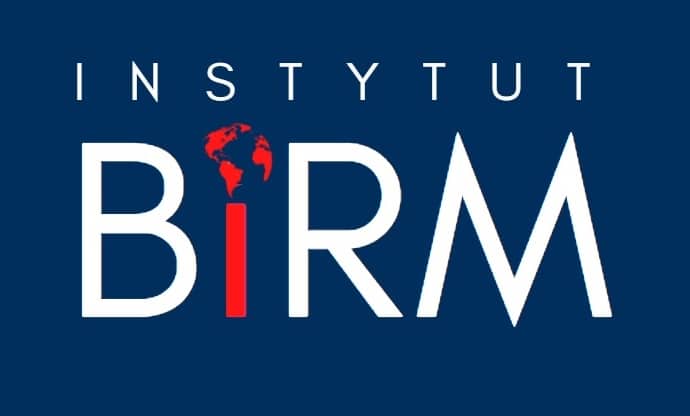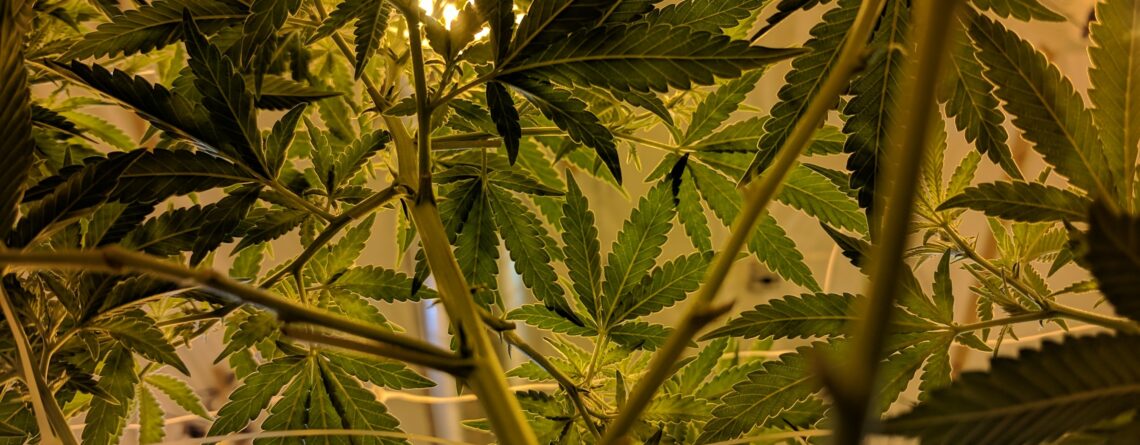Up in Smoke – The Future of Marijuana Legislation and its Impacts on Federalism in the United States
In the last three decades, America has carved out its place as the leading power in the 'War on Drugs’ a strategic multifaceted approach to ending drug use that has proved largely ineffective. Many American states have begun to question the need for the War on Drugs, with some going as far as legalizing and decriminalizing multiple drugs, specifically marijuana, for medical and recreational uses. This has caused conflict between federal and state administrations as technically the federal law prohibiting marijuana has supremacy over any state laws permitting it as outlined in the Supremacy Clause in the Constitution. However, since the constitution was first written there have been directives from the successive presidents which have made cannabis regulations laxer or more stringent during their time in office. In recent years, the Obama administration embraced progressive federalism by giving states more control over issues within their borders, one of those being marijuana regulation. This was sharply contrasted with the Trump administration’s hardline anti-marijuana stance. This reverse in opinions has led to uncertainty in whether the federal administration will choose to persecute those using marijuana in states that have legalized it. This ever-changing landscape leads to conflicts between federal and state legislation at every level. This article explores not only those conflicts but solutions that would bring the regulations into harmony.
Marijuana in America:
The history of Cannabis in America is almost as long as the American government itself. Cannabis first appeared in colonies near Jamestown and was cultivated as hemp, which was a massive industry in the United States until the Civil War. From 1850 to 1941, marijuana was recognized as a medication in the official US Pharmacopeia due to its ability to help with various illnesses and its anti-inflammatory properties. In 1941, Marijuana was removed from the Pharmacopeia due to the invention of other similar treatments such as aspirin, morphine and other opium-derived drugs. Ironically, it was American states that first began to implement laws restricting narcotic use, including marijuana, due to the high rate of pain killer addiction after the civil war. The state of Nevada enacted a law prohibiting the sale of any non-medical opiates in 1877. In 1906 the federal government followed suit, enacting the Pure Food and Drug Act which required labels on items that contained dangerous substances such as alcohol, morphine, opiates and cannabis. The act also gave the federal government the authority to confiscate any non-compliant products. This act was not meant to restrict drug usage, but to inform consumers of the dangers of such substances. The beginning of Marijuana regulation at the federal level began with the ‘Marihuana Tax Act of 1937’, which regulated growers, sellers and buyers of marijuana, and restricted the provision of medical marijuana to pharmacist prescriptions. This act was protested by many physicians however they had little sway, and thus by 1941 medical marijuana products had widely disappeared.
In the 1970’s President Nixon campaigned for stricter regulation on substances to stop excessive drug use. Congress implemented the Controlled Substances Act (CSA) which separated drugs into 4 distinct categories, each with varying levels of regulation. Schedule I is the strictest category and includes drugs with no current medicinal value and a perceived higher abuse rate. Marijuana was deemed to fit into Schedule 1 and therefore was effectively excluded from all medical research. However, due to multiple cases nation-wide wherein certain patients (particularly those with AIDS) were using Cannabis to effectively manage their symptoms the federal government opened up the Individual Patient Investigation New Drug (IND) program to explore the benefits of medical marijuana. IND gave medical professionals the ability to prescribe marijuana to enrolled patients for further study on its effects and its medicinal value, of course, all under the strict supervision of the federal government. It was shut down by the Bush administration after more people started to apply due to the rising number of patients with AIDS. Though this program was short-lived it proved marijuana had some amount of medical value and thus there were attempts to change its scheduling to the second level, however, due to its perceived high potential for abuse it was kept in the first schedule. Due to marijuana’s success in treating pain symptoms during the 1970s over thirty states passed legislation involving the use of medical marijuana. This created the framework for programs like IND to function on a state level. Although twenty-two programs were created only eight were given federal permission to function, a further six states passed legislation moving marijuana from schedule one to schedule two within their state legislation.
Federalism and Marijuana Legislation:
The laws currently governing the legal use of marijuana in the US are murky. The current situation is as follows; under certain state laws, medical and recreational marijuana is legalized or decriminalized however it is still federally forbidden. This creates a grey area surrounding whether federal laws prohibiting marijuana or state laws permitting the use of marijuana should be enforced. The lack of clear legal definitions on the legality of marijuana has created an atmosphere wherein even if one is consuming marijuana in a state where it is legal, they can be federally prosecuted.
Marijuana Under the Obama Administration:
Under the Obama administration, the release of a memo pertaining to state legalized marijuana, hereby referred to as the Cole Memo, stated that the federal government would not prosecute those within states who had legalized marijuana as long as the state itself regulated its usage to an acceptable degree. This was not due to Obama’s lax stance on drugs but rather the recognition that the justice department has limited resources and other priorities needed to be attended to over recreational marijuana usage by adults. In short, the memorandum addressed to all United States Attorneys dictated that while:
In jurisdictions that have enacted laws legalizing marijuana in some form and that have also implemented strong and effective regulatory and enforcement systems to control the cultivations, distribution, sale, and possession of marijuana, conduct in compliance with those laws and regulations is less likely to threaten the federal priorities set forth above.
Which is a veiled nod of acceptance to state legalization, at least those that are sufficiently regulated. The memo even went as far as to address the benefits that state legalization might have in aiding the federal government in its priorities by being able to better regulate the inter-state distribution and the replacement of illegal markets with state-regulated enterprises. This memo was widely accepted and followed by attorneys and law enforcement agencies until the changing of administrations.
Marijuana Under the Trump Administration:
Under the Trump administration, the appointment of new Attorney generals greatly affected the States’ rights to regulate marijuana within their borders. On January 4th, 2018, then Attorney General, Jefferson Sessions rescinded all previous guidance documents regarding marijuana, making the Cole memo obsolete. Furthermore, he stated that „given the Department’s well-established general principles, previous nationwide guidance specific to marijuana enforcement is unnecessary and is rescinded, effective immediately” This memo greatly affects state laws, as it gives attorneys the green light to prosecute state legalized dispensaries and those caught possessing or using marijuana.
The Future of Marijuana in the United States:
It is no exaggeration to proclaim that marijuana legalization has ushered in a federalism crisis. On every level of regulating marijuana, state and federal laws contradict each other and with no clear dictation on which to heed there is mass confusion among law enforcement, attorneys, dispensaries and the consumers. For example, consider a local or state law enforcement officer who encounters a civilian in possession of a legal amount of state legalized marijuana, under state law this person has committed no offence and should be free to go on their way, however under federal law this person has committed a crime and their property should be seized and they should face charges. This is one of the many unsolved conundrums that are presented within the current landscape of the United States. Without answers to these very basic questions, the future of legal cannabis in the United States is hazy.
It can be argued that the two main problems surrounding the legalization of marijuana are; its inclusion in Schedule 1 at the federal level in the Controlled Substances Act (CSA), which excludes it from medical research that could provide much-needed clarity on its medicinal uses and perceived addictiveness, and the overwhelming societal anti-drug taboo which seeks to criminalize those who use marijuana recreationally and thus attaches the image of marijuana to cartels and gangs. The reversal of the previous marijuana-related memos by the Attorney general also had a negative effect on regulating marijuana as there are new uncertainties wherein state legalized dispensaries are being persecuted by the federal government, which only drives more sellers underground instead of encouraging them to follow state regulations. I propose that marijuana should be moved federally to schedule 2 or 3 of the CSA, and multiple federally run programs like the original IND program should be reinstituted to provide research and trial of medical marijuana. Additionally, upon further research and following the example of Canada, marijuana should be either federally legalized or there should be federal legislation stating that state legalized marijuana that is sufficiently regulated would not be considered criminal under federal laws
The law is an ever-changing landscape as illustrated by the centuries of history behind marijuana legalization in the United States. Though it used to be a major industry, and indeed, a preferred treatment favoured by many physicians, it is now thought of at a federal level as highly dangerous and of no medical value. Whereas the federal and regional governments are in essence equal, marijuana policy shows that the federal government is willing to push for supremacy of its laws over the laws of states, and even then, it will change administration to administration depending on the views of those in power. Currently, there is much uncertainty surrounding every level of Marijuana legislation in the United States, as many are waiting for the federal government’s definitive word, which may not come for many years. Legalizing or at the very least rescheduling marijuana at the federal level would be the ideal scenario however it is more likely that there will either be something akin to the Cole memo or the continuation of Sessions reversion to a no guidance policy.
For more information please refer to the following resources;
Fevery, Andrew K. „Half Baked: The Federal and State Conflicts of Legalizing Medical Marijuana.” Core.ac.uk, 2012, core.ac.uk/reader/148355220.
Nickles, Dean. Notre Dame Law Review Federalism and State Marijuana Legislation. , 2016.
Schwartz, David S. „High Federalism: Marijuana Legalization and the Limits of Federal Power to Regulate States.” Papers.ssrn.com, 21 Mar. 2013, papers.ssrn.com/sol3/papers.cfm?abstract_id=2237618. Accessed 15 June 2020.


Dodaj komentarz